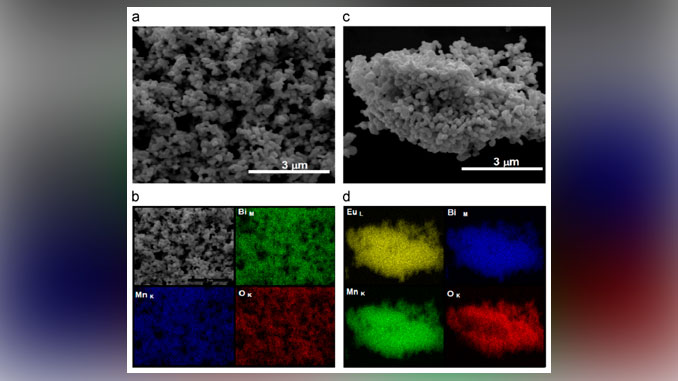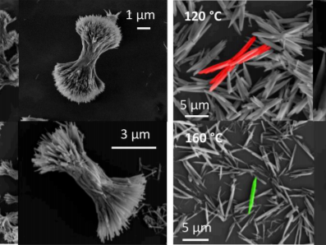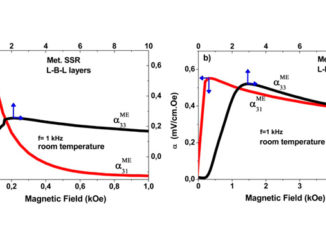
Writers: Rafael A. Ferreira, Maria E. dos Santos, Cássio Morilla-Santos, Ronan Lebullenger, Octavio Peña, Paulo N. Lisboa-Filho
Keywords: : Powders: chemical preparation; X-ray methods; Magnetic properties; Perovskites
Abstract: Polycrystalline oxide materials with nominal compositions BiMn2O5 and Bi0.9Eu0.1Mn2O5were obtained by urea combustion. Crystallographic studies using X-ray diffraction and Rietveld Refinement techniques showed the formation of single-phase samples for both compositions, crystallizing in a mullite-type orthorhombic perovskite structure, space group Pbam (Z=4). Replacement of Bi+3 by Eu+3 promoted a slight distortion and a unit cell contraction due to a decrease of the c-parameter for Bi0.9Eu0.1Mn2O5. The SEM/EDX techniques confirmed the formation of single-phase materials with excellent mapping distribution. Magnetic measurements showed different behaviors: BiMn2O5 is an antiferromagnet (AFM) with a Néel temperature (TN) of 41 K and a Curie–Weiss temperature ΘCW of −277 K, while Bi0.9Eu0.1Mn2O5 displayed a ferrimagnetic behavior with a TC of 44 K and ΘCW of −270 K. The role of Eu+3 and the mechanisms responsible for the magnetic transition are discussed on the basis of chemical bonds and exchange interactions.




